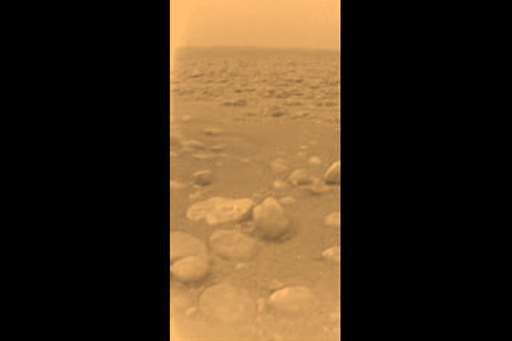1.2 Distance from the Sun is important too
The further out from the Sun a moon has formed, the more exotic the materials it is made of. Salts and volatiles all have the effect of lowering the melting temperature of the ice, making it easier for the moons to show signs of geological activity even if there is little internal heat. The richest-known cocktail of ices occurs on Neptune’s large moon Triton, whose surface appears to be mostly water-ice and frozen carbon dioxide, with traces of methane, carbon monoxide and probably ammonia. In addition, it has seasonal polar caps of nitrogen-ice.

Titan, the largest moon of Saturn, has a dense atmosphere composed mainly of nitrogen but with methane and other hydrocarbons forming clouds and haze. It sometimes rains methane and there are vast lakes of methane at the surface. The ground surface (which is made of water-ice that behaves as rock behaves on Earth) is eroded by rivers of methane creating visible channels and river beds. We know this because of the Cassini–Huygens mission. This mission was a joint venture of ESA and NASA and was a massive success. It reached Saturn in July 2004, with the Huygens lander touching down on Titan in January 2005. This gave us the most distant ground-level view yet achieved. Figure 7 is the surface of Titan taken by the Huygens lander. The thick orange haze is high in the nitrogen- and methane-based atmosphere. The pebbles are not in fact rock, but are water-ice.
See an artist’s impression of a methane rainstorm on Titan in this Astronomy Picture of the Day [Tip: hold Ctrl and click a link to open it in a new tab. (Hide tip)]
